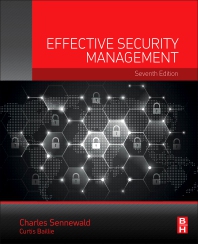The Islamic State and Its Implications for Security


Co-authored by Yonah Alexander and Dean Alexander, The Islamic State: Combating the Caliphate Without Borders (Lexington Books, September 2015) offers insights into the nature of IS and what the international community can do to combat it. Image courtesy of Dean Alexander

Dean C. Alexander is Professor and Director of the Homeland Security Research Program for Western Illinois University. He is also a member of the Security magazine Editorial Advisory Board.



The so-called “Islamic State” (IS) that has swept into power in parts of Syria and Iraq presents an imminent danger to the global community, with its capacity as an effective, ideologically motivated and bloodthirsty fighting force, coupled with its expanding territorial reach, on the ground and online. The Islamic State has taken on a quasi-state form that mixes modernity with ancient rites, and aggressively promotes sectarian violence and religious extremism with a decidedly apocalyptic bent.
By June 2015, it had established affiliate terror organizations that have claimed responsibility for deadly attacks in Afghanistan, Algeria, Egypt, Libya, Saudi Arabia, Tunisia and Yemen. Likewise, the IS has won the allegiance of terror groups from as far away as Indonesia, Pakistan, the Philippines and Nigeria. Also worrisome, the IS has been successfully radicalizing and recruiting fighters worldwide through its sophisticated brand of social media tactics and aggressive offline actions.
For the international community, the Islamic State’s savage yet partly successful record so far, as occupiers and killers, combined with its designs for the Levant and beyond, warrants very close scrutiny. In fact, General John Allen, Special Presidential Envoy for the Global Coalition to Counter the Islamic State, described the Islamic State as “one of the darkest forces that any country has ever had to deal with” as well as “a truly unparalleled threat to the region that we have not seen before.”
The Islamic State and its progenitors aggravated and opportunistically took advantage of the de facto unraveling of Iraq and Syria in the preceding years and today. The IS quasi-state now rests on a large swath of territory subsuming eastern Syria and western Iraq, with Raqqa, Syria, as its declared capital, and in possession of Mosul, the second-largest city in Iraq. As such, this newly declared Islamic State is not a “traditional” terrorist organization, but a transnational variant of a more dangerous degree.
And yet, by the end of March 2015, the IS lost some 25 percent of the land (13,000 square kilometers) it controlled at its zenith. As of June 2015, 10,000 IS fighters had been killed as well as about half of its top leadership, its funding sources have weakened, declining services in areas under its control have been noted, and internal strife has expanded. And still, the quasi-state’s broad aspirations and inherent capabilities – due to control of land, thousands of fighters, ample funding and otherwise – merit careful and dedicated efforts to ensure their demise.
The Islamic State’s radical ideologies of Salafism-Jihadism-Takfirism, fervent focus on Islamic eschatology, global ambitions and harsh actions have served to recruit members worldwide to its cause. Concurrently, the IS has sought to intimidate individuals, communities and countries across the globe. These threats and widespread IS massacres of Sunni, Shiite and non-Muslim victims were often recorded and broadcast through online social networks and the Islamic State’s own propaganda outlets.
The United Nations has characterized some Islamic State massacres as violations of international law, accusing the group of committing acts of genocide, crimes against humanity, and war crimes. Increasingly, governments, non-profits and non-governmental organizations worldwide – non-Muslims and Muslim-alike – have harshly criticized the ideology and actions of the IS.
IS’s jihadists now seem to view the most horrific tactics as acceptable and almost passé. The Islamic State’s frequent beheadings, amputations, crucifixions, mass executions, stonings, throwing people off buildings and ease with burying – and even burning – people alive mark a new level of evil. With each passing day, new lows in the annals of human depravity are straddled: from organ harvesting to fund operations to the proposed sale of the bodies of dead opposition fighters.
The Islamic State’s vision and practices have attracted many recruits drawn from other Sunni and anti-Assad groups. Ultimately, the IS has been able to acquire substantial territory, assets and spoils from rebel forces and from the Syrian and Iraqi militaries. These acquisitions have significantly buttressed the fortunes and capabilities of the IS. Still, by the first quarter of 2015, the IS has experienced some military setbacks, as well as political and social failings. Yet, the capture of the capital of Anbar province, Ramadi and other advances in Iraq and Syria during the second quarter of 2015 illustrate that the Islamic State is far from defeated.
The Islamic State has been especially cunning in looting banks, conducting extortion and engaging in commerce such as oil trading and smuggling. Also, it has raised funds from other criminal activity to enhance its revenue streams. As a result, the Islamic State has amassed unprecedented assets to fund its regime. The confluence of this newly acquired wealth, various dramatic military successes and police-state rule have made the IS a formidable threat to security concerns in the Middle East and beyond.
While playing the role of conqueror, the Islamic State has attempted to provide some semblance of governance as it provides administrative and service-oriented support, although, of late, of poorer quality. In territories that it controls, the IS collects taxes, administers courts and runs schools. The organization has an elaborate hierarchy, comprised of al-Baghdadi as caliph, two deputies, 12 governors each for Syria and Iraq, the Shura council and various councils overseeing disparate issues, such as finance, the military and security. The IS has also afforded its operatives some autonomy in their operations, injecting some elements of decentralization.
Presently, the Islamic State is characterized as a hybrid pseudo-sovereign terrorist group and an organized criminal entity. Ultimately, the goal must be to weaken and, over the long term, defeat the Islamic State.
Fortunately, the global community is taking note. It is crafting policies that will best serve each country’s own interests, as expected, given the often divergent and competing needs and perspectives. Still, some decisions, such as authorization of airstrikes on Iraqi and Syrian targets of the Islamic State, have proven fairly positive. Since then, Islamic State’s footprint in Iraq has shrunk, although some consolidation – if not advancement – has occurred in Syria.
Concurrently, there appears to be fervent acceleration of IS affiliates in an increasing number of countries. So, too, lone wolves and cabals from Australia, Belgium, Canada, Denmark, France, United Kingdom and the United States have attempted to or successfully carried out terrorist attacks on behalf of or aligned with the Islamic State.
The 60-plus member countries of the coalition aligned against the Islamic State provide a solid basis from which to counter this de facto jihadist state. The open question is whether or not the coalition will pursue additional effective strategies to decimate the IS.
The support that the IS has acquired both in the region and beyond will also affect its sustainability. Unless counterbalanced, the Islamic State’s well-developed social media instruments and strategic communications will likely enable it to continue to gain new adherents.
As a consequence, the ultimate military defeat of the IS in Syria and Iraq is clearly needed. This is all the more evident given IS’s possession of tanks and other weaponry generally available only to de jure nation-states. Once it achieves a military defeat of IS, the international coalition will then need to create some semblance of stability so that traditional elements of civil society can function.
The Islamic State did not arise overnight nor without extensive resolve and resources. The solutions to undermining and ultimately defeating this quasi-state will be lengthy, arduous, multifaceted and no doubt entail some risk. But the risk of not acting is clearly greater.
The Islamic State continues to call for its operatives and new adherents to attack Western and other targets. While often traditional law enforcement and intelligence efforts have proven helpful in preventing terror attacks, encouraging the public to forewarn law enforcement about alleged suspicious activities, including actions that appear out of line with normal conditions, is critical. Among pre-terror incident indicators the public should report to authorities include: people conducting surveillance, gathering information, testing security, acquiring supplies and funds, acting suspiciously, undertaking dry runs and getting into position to undertake an attack.
With the 14th anniversary of the 9/11 attacks looming, transnational jihadist terrorism continues to merit further attention and sustained counter-efforts along intelligence, military, law enforcement, security, legal, political, diplomatic, business and non-profit fronts. Failure to combat this menace on multilateral fronts will lead to the expansion of transnational jihadist terrorism for many years to come.
Looking for a reprint of this article?
From high-res PDFs to custom plaques, order your copy today!













